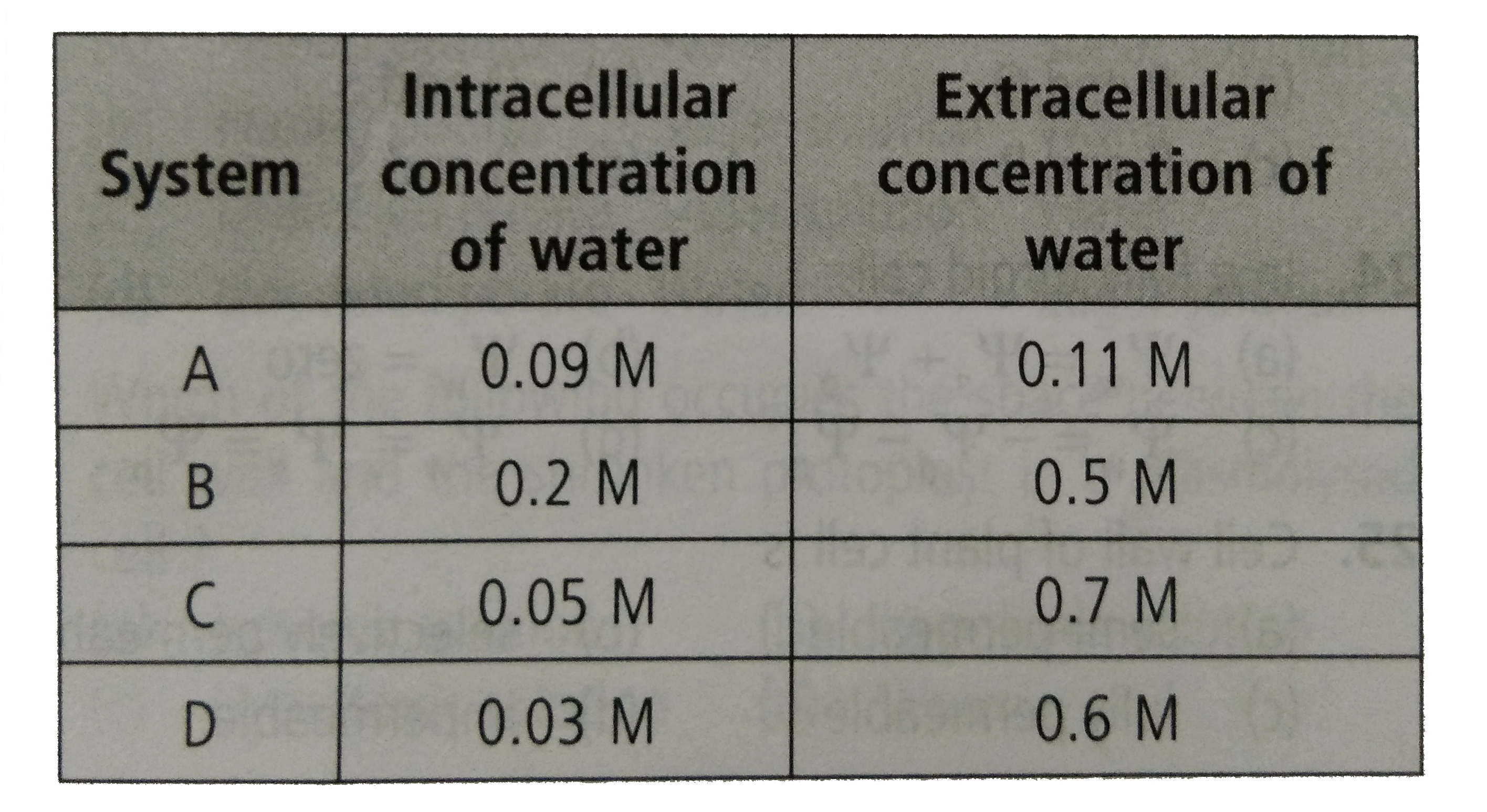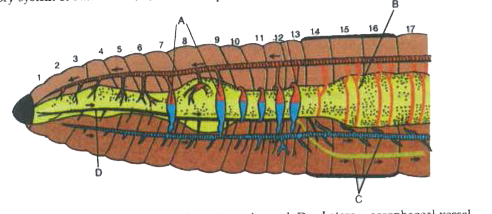The given table shows properties of four cells systems A, B, C and D. The maximum rate of inward diffusion of water will be observed in which of these systems?

A
B
B
D
C
C
D
A
Text Solution
The correct Answer is:C
Osmosis is a process of movement of a solvent across a semi-permeable membrane, from lower DPD to higher DPD. This process was discovered by Pfeffer. When the water moves out of the cell, it is called exosmosis, which makes the cell shrink. When water moves inside the cell, it is called endosmosis, which makes the cell swell.
Osmosis is driven by two factors:
(i) Concentration of dissolved solutes in a solution, and
(ii) Pressure gradient In the given table,

Since maximum DPD, is seen in system C, the maximum inward diffusion of water will be seen in system C until the equilibrium is achieved.
|
Topper's Solved these Questions
Similar Questions
Knowledge Check
The given table shows properties of four cell systems A,B,C and D the maximum rate of inward diffusion of water will be observed in which of these system ?
 ASystem ABSystemBCSystemCDSystemD
ASystem ABSystemBCSystemCDSystemDThe given table shows properties of four cell systems A,B,C and D the maximum rate of inward diffusion of water will be observed in which of these system ?
 ASystem ABSystemBCSystemCDSystemD
ASystem ABSystemBCSystemCDSystemDThe given table illustrates the concentration of water inside and outside the cell in various systems.

The maximum rate of diffusion is observed inAsystem ABsystem BCsystem CDsystem D
Block B lying on a table weighs w. The coefficient of static friction between the block and the table is mu. Assume that the cord between B and the knot is horizontal. The maximum weight of the block A for which the system will be stationary is

View SolutionThe given figure shows the human digestive system. Identify A, B, C,D and E respectively

View SolutionThe given figure shows the diagrammatic view of human respiratory system. Identify A, B, C and D.

View SolutionThe given figure shows the diagrammatic view of human respiratory system. Identify A, B, C and D.

View SolutionIn the circulatory system of Pheretima A, B, C and D represent

View Solution


